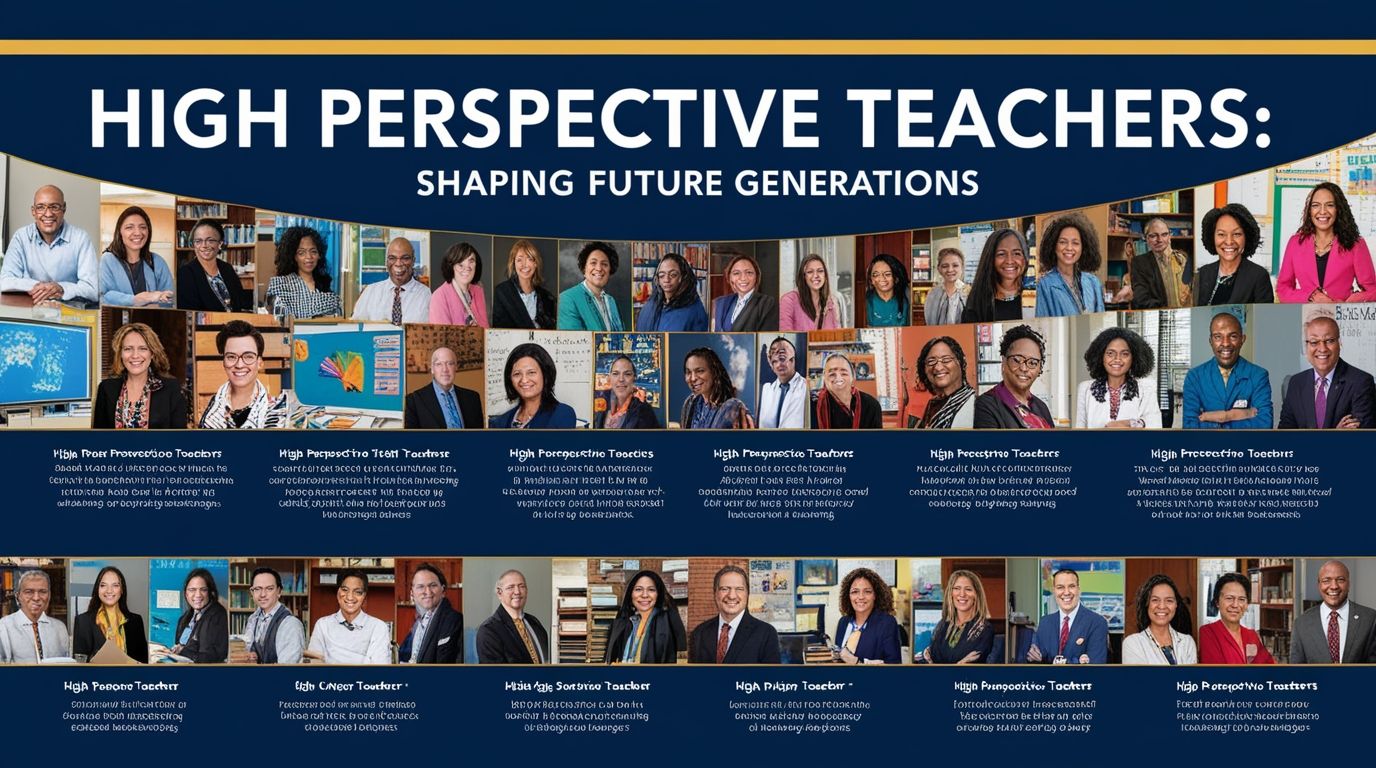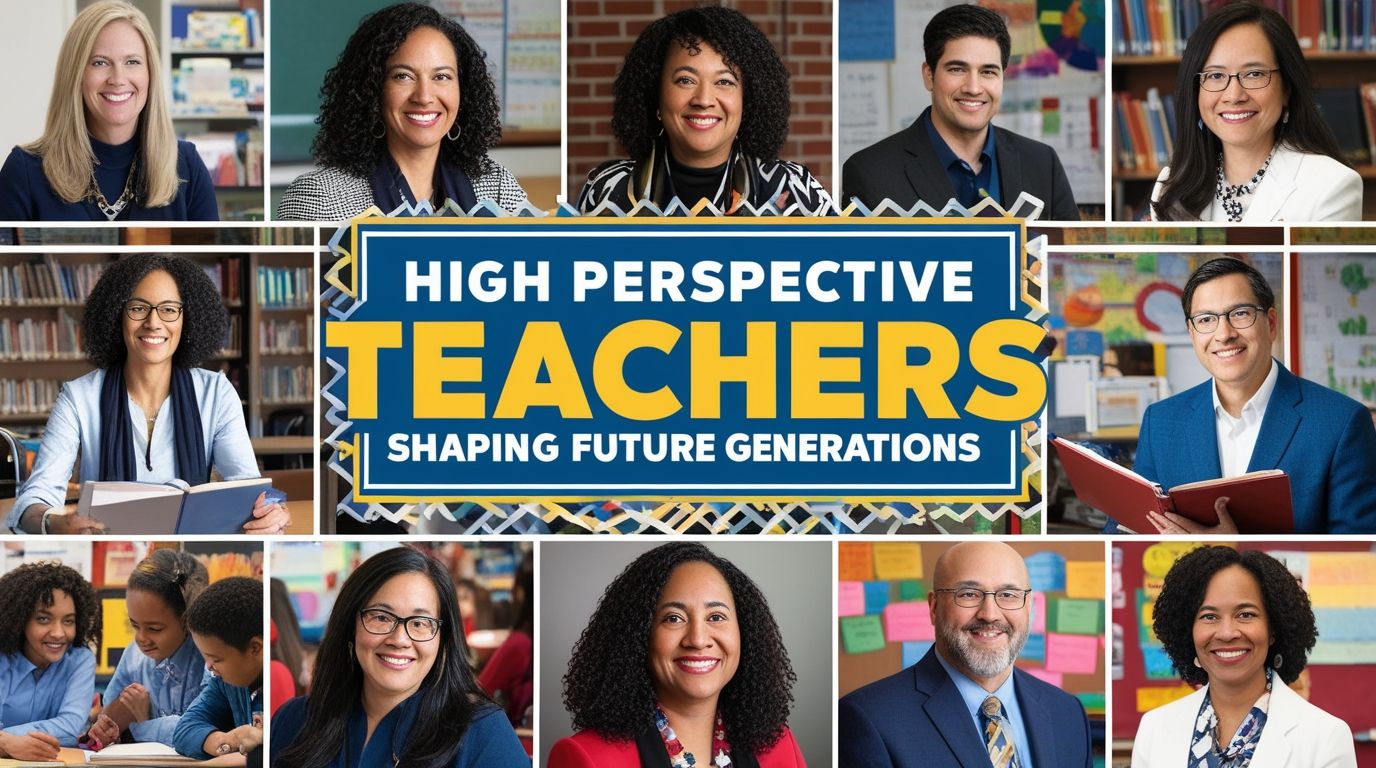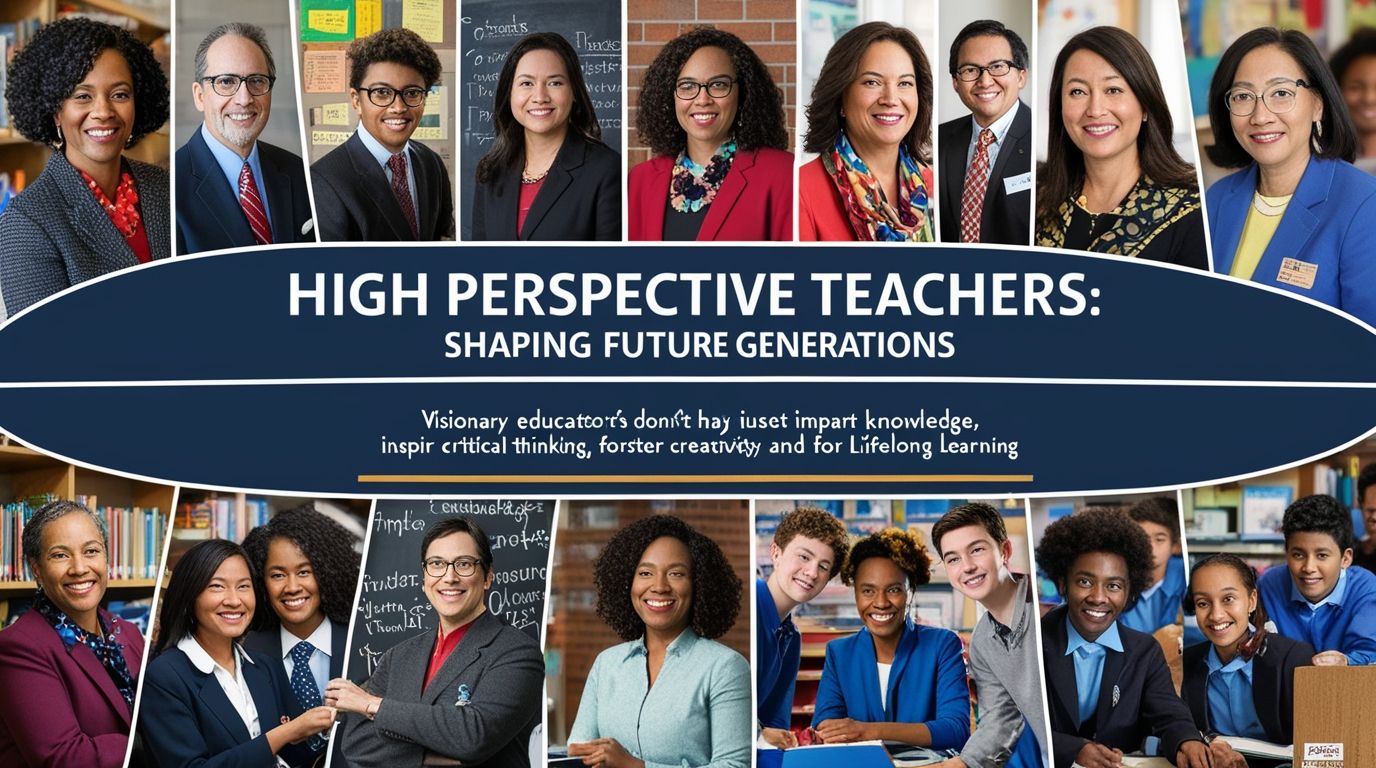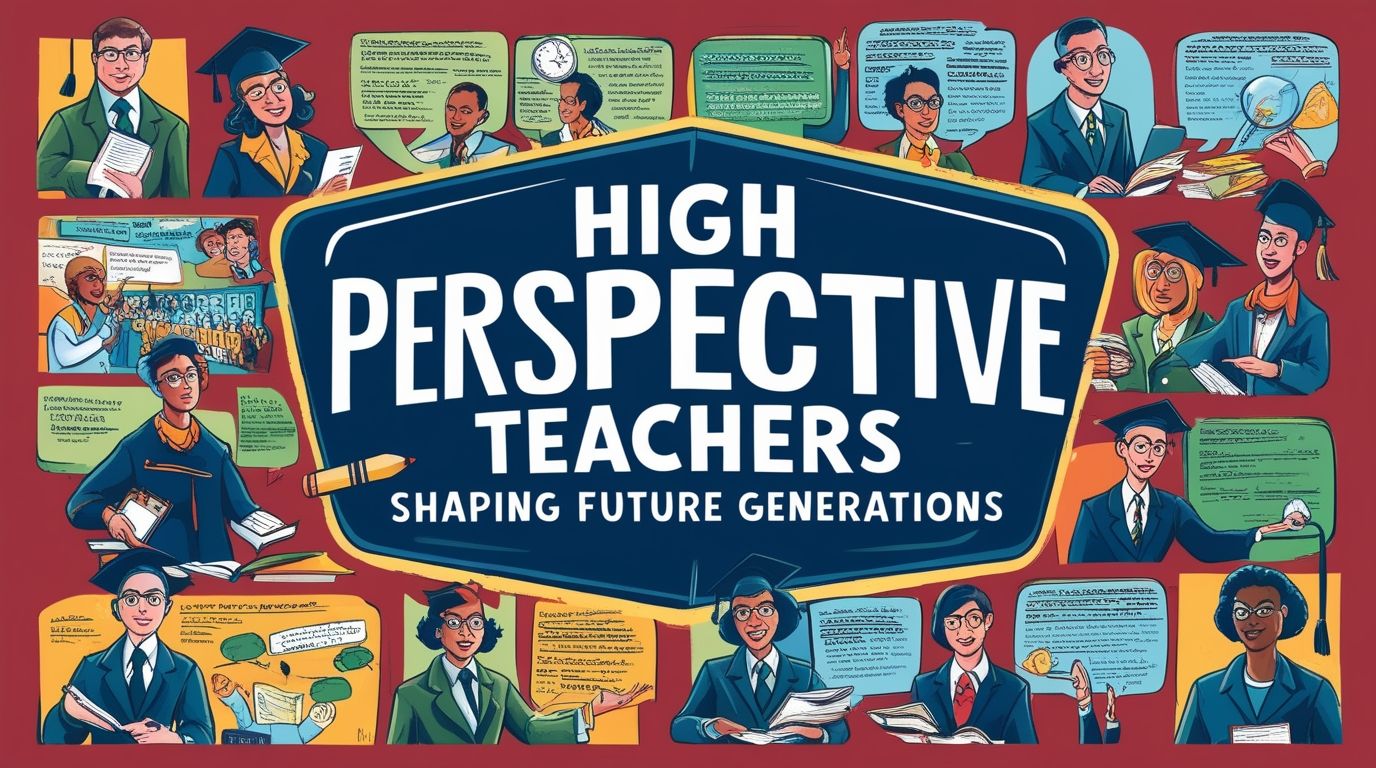Introduction
High Perspective Teachers in today’s rapidly evolving educational landscape, the role of teachers extends far beyond the traditional boundaries of imparting knowledge. Among the diverse cadre of educators, it stand out for their holistic approach, integrating a broad understanding of various disciplines, empathy, adaptability, and a commitment to fostering the overall development of their students. This article delves into the essence of high perspective teachers, exploring their characteristics, impact, teaching strategies, and the challenges they face.
Definition of High Perspective Teachers
High perspective teachers are educators who possess a comprehensive understanding of both their subject matter and the broader educational context. They are not confined to a narrow focus but instead view education through a wide lens, recognizing the interconnectedness of different fields of knowledge and the diverse needs of their students. These teachers are characterized by their ability to integrate various perspectives, fostering a learning environment that encourages critical thinking, creativity, and personal growth.

Importance in Modern Education
In the modern educational system, the role of high perspective teachers is paramount. These educators contribute significantly to developing well-rounded students who are not only academically proficient but also equipped with the skills necessary to navigate an increasingly complex world. By fostering a holistic approach to education, high this help students connect their learning to real-world contexts, promoting lifelong learning and adaptability.
Characteristics of High Perspective Teachers
- Broad Knowledge Base: High perspective teachers possess a deep understanding of their subject matter while also being knowledgeable about related fields. This allows them to create interdisciplinary connections that enrich the learning experience.
- Empathy and Understanding: These teachers demonstrate a strong sense of empathy, understanding the diverse backgrounds and needs of their students. They build strong relationships, creating a supportive and inclusive classroom environment.
- Adaptability and Innovation: High perspective teachers are adaptable, constantly seeking innovative methods to enhance their teaching. They are open to new ideas and technologies, ensuring that their teaching practices remain relevant and effective.
- Commitment to Continuous Learning: These educators are lifelong learners, continually updating their knowledge and skills. They model the importance of ongoing education to their students, inspiring them to embrace a similar mindset.

Impact on Students
The influence of high perspective teachers on their students is profound and multifaceted.
- Academic Achievement: By presenting information in a comprehensive and interconnected manner, these teachers help students achieve higher academic performance. Their interdisciplinary approach enables students to see the relevance of their studies, increasing engagement and motivation.
- Personal Development: It emphasize the development of critical thinking, problem-solving, and emotional intelligence. They nurture students’ personal growth, preparing them for the complexities of life beyond the classroom.
- Long-term Success: The skills and values instilled by high perspective teachers contribute to students’ long-term success. These students are better equipped to adapt to changes, pursue varied interests, and make informed decisions throughout their lives.
Teaching Strategies
High perspective teachers employ a variety of strategies to create an enriching learning environment.
- Interdisciplinary Approach: By integrating multiple subjects, these teachers help students make connections across different areas of knowledge. This approach fosters a deeper understanding and encourages creativity.
- Student-Centered Learning: This prioritize the needs and interests of their students. They create a dynamic and interactive classroom where students take an active role in their learning.
- Use of Technology: Embracing technological advancements, these teachers enhance the learning experience through digital tools and resources. Technology is used not only to facilitate learning but also to prepare students for a tech-driven world.
- Real-World Applications: It connect classroom learning to real-world situations. They incorporate practical examples, projects, and experiential learning opportunities, making education more relevant and engaging.

Challenges Faced
Despite their effectiveness, high perspective teachers face several challenges.
- Balancing Depth and Breadth: Striking a balance between covering content in depth and providing a broad perspective can be challenging. Teachers must carefully plan their lessons to ensure comprehensive coverage without overwhelming students.
- Maintaining Student Engagement: Keeping students engaged and motivated requires creativity and effort. High perspective teachers must continually find ways to make learning interesting and relevant.
- Adapting to Diverse Learning Needs: Addressing the diverse needs of students requires flexibility and differentiated instruction. High perspective teachers must be adept at modifying their teaching methods to accommodate different learning styles and abilities.
Case Studies
Several high perspective teachers have made significant impacts in their classrooms and communities. For example, Mrs. Johnson, a high school science teacher, integrates environmental science with social studies, encouraging students to explore the socio-economic impacts of climate change. Her students have participated in community projects, applying their knowledge to real-world environmental issues. Testimonials from her students highlight the lasting impact of her interdisciplinary approach on their academic and personal lives.
Conclusion
High perspective teachers play a crucial role in shaping the future of education. Their holistic approach, characterized by broad knowledge, empathy, adaptability, and a commitment to continuous learning, fosters the development of well-rounded, successful students. As the educational landscape continues to evolve, the importance of high perspective teachers will only grow. To support these educators, it is essential to provide ongoing professional development opportunities and encourage a culture of innovation and inclusivity in schools. By doing so, we can ensure that more teachers adopt a high perspective approach, ultimately benefiting students and society as a whole.

xhiof9
Thanks for ones marvelous posting! I definitely enjoyed reading it, you are a great author.I will ensure that I bookmark your blog and definitely will come back in the future. I want to encourage continue your great job, have a nice day!
rwulx8
bbkpgv
Wake up your way with this premium CD player alarm clock radio. Whether you prefer to rise with the AM/FM radio, your favorite CD, or a standard buzzer, this versatile alarm clock with CD player has you covered. Its intuitive design includes dual alarms, a large digital display, snooze/sleep timers, and USB charging for your phone. Enjoy high-quality stereo sound from a compact unit that fits easily on any bedside table or shelf. The best clock radios with CD player combine retro functionality with modern convenience—and this one leads the pack.
I like this internet site because so much utile material on here : D.
Glad to be one of many visitants on this awful internet site : D.
Thank you for sharing with us, I think this website genuinely stands out : D.
As a Newbie, I am continuously exploring online for articles that can help me. Thank you
It is in reality a great and useful piece of information. I?¦m glad that you simply shared this helpful information with us. Please stay us up to date like this. Thanks for sharing.
Hey are using WordPress for your site platform? I’m new to the blog world but I’m trying to get started and create my own. Do you need any coding knowledge to make your own blog? Any help would be greatly appreciated!
I get pleasure from, lead to I found just what I was looking for. You’ve ended my 4 day long hunt! God Bless you man. Have a nice day. Bye
You are a very smart individual!
You are my inspiration , I own few blogs and infrequently run out from to post .
I am really impressed with your writing skills and also with the layout on your weblog. Is this a paid theme or did you modify it yourself? Either way keep up the nice quality writing, it’s rare to see a nice blog like this one nowadays..
Oh my goodness! a tremendous article dude. Thanks Nevertheless I am experiencing subject with ur rss . Don’t know why Unable to subscribe to it. Is there anyone getting identical rss downside? Anybody who knows kindly respond. Thnkx
You could definitely see your expertise within the paintings you write. The world hopes for more passionate writers like you who are not afraid to say how they believe. Always go after your heart.
Nice post. I learn one thing more difficult on completely different blogs everyday. It can all the time be stimulating to read content material from other writers and follow just a little something from their store. I’d prefer to make use of some with the content on my weblog whether or not you don’t mind. Natually I’ll give you a link on your internet blog. Thanks for sharing.
Hello.This post was extremely interesting, particularly because I was investigating for thoughts on this topic last Friday.
Very interesting information!Perfect just what I was looking for!
It’s great to see someone explain this so clearly.
I loved as much as you will receive carried out right here The sketch is attractive your authored material stylish nonetheless you command get got an impatience over that you wish be delivering the following unwell unquestionably come more formerly again since exactly the same nearly a lot often inside case you shield this hike
I will right away snatch your rss feed as I can’t find your email subscription link or e-newsletter service. Do you have any? Kindly let me realize in order that I may just subscribe. Thanks.
Saving and sharing—pure wisdom here.
Your voice brings light to thoughts that might otherwise go unnoticed.
Artikelnya sangat mudah dibagikan dan selalu mendapat respons positif. Ini adalah sumber yang sangat direkomendasikan!